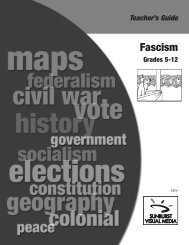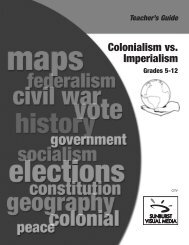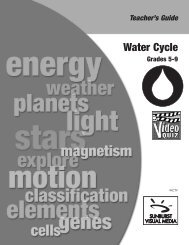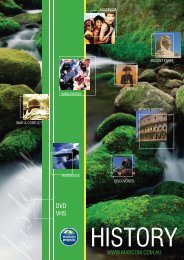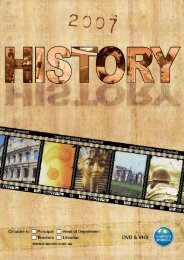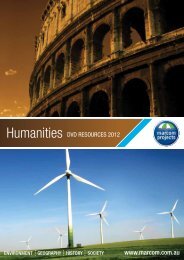Thrilling Experiments: Potential and Kinetic Energy
Thrilling Experiments: Potential and Kinetic Energy
Thrilling Experiments: Potential and Kinetic Energy
Create successful ePaper yourself
Turn your PDF publications into a flip-book with our unique Google optimized e-Paper software.
Extensions<br />
Additional<br />
Resources<br />
• Tennis Ball Roller Coaster<br />
Tell students they will be designing <strong>and</strong> constructing cardboard “tennis ball”<br />
roller coasters with three hills. The tennis ball in each design must start from the top of<br />
the first hill, roll up <strong>and</strong> down the other two hills, <strong>and</strong> exit the end of the track. Each<br />
roller coaster will be judged in a class competition. The track with the greatest total of<br />
vertical heights for all three hills—if the tennis ball completes the course—will be<br />
named the winning design. Have students consider the following when designing<br />
their roller coasters: Can all the hills be the same height? If not, why? Can they get<br />
bigger or must they get smaller? How will you determine how big or how small the<br />
hills can be <strong>and</strong> still win this contest? Does how steep the hill is count? Is it better to<br />
make the hills steep or not so steep? Why? How curvy should the tops of the hills<br />
<strong>and</strong> the valleys be? Should you design sharp turns or smooth turns? Why? What<br />
provides resistance on the roller coaster causing the tennis ball to slow down? How<br />
can this resistance be reduced? Divide students into small groups <strong>and</strong> give each<br />
group the materials listed. The left <strong>and</strong> right roller coaster tracks will be made from<br />
the two pieces of corrugated cardboard that must be cut out as identical shapes. Each<br />
valley in the roller coaster must dip to a height of 20 centimeters from the bottom of<br />
the cardboard. Have students use heavy-duty scissors or a box knife to cut out both<br />
tracks. They will probably have their own ideas on how the roller coaster should be<br />
shaped, but here is an idea on how to lay out the roller coaster on the cardboard.<br />
Students should cut out twenty-five 4 cm ? 12 cm rectangles. These rectangles will<br />
serve as spacers between the two cutout tracks. Put glue along both of the 12centimeter<br />
edges <strong>and</strong> fasten them to various places between the two tracks so that the<br />
tracks are rigid <strong>and</strong> separated by a distance of 4 centimeters. Measure the heights of<br />
each of the three required hills <strong>and</strong> add them up. The roller coaster with the greatest<br />
total height of the three hills, whose tennis ball successfully completed its journey, is<br />
the winner.<br />
• Riding on the Gravity Express<br />
Amusement park rides, water park rides, <strong>and</strong> rides in the local playground provide<br />
thrills while gravitational potential energy (GPE) <strong>and</strong> kinetic energy (KE) transform<br />
from one to the other. Make a list of such rides <strong>and</strong> explain where in the ride the GPE<br />
<strong>and</strong> the KE are the greatest. Where do the forces act in each ride providing the<br />
resistance that converts the total GPE <strong>and</strong> KE into heat?<br />
• Sports Connection<br />
Have students choose a sporting event to research <strong>and</strong> ask them to write descriptions<br />
of how acceleration, mass <strong>and</strong> force interact in the event chosen. Direct struggling<br />
students toward car racing.<br />
24<br />
<strong>Thrilling</strong> <strong>Experiments</strong>: <strong>Potential</strong> <strong>and</strong> <strong>Kinetic</strong> <strong>Energy</strong> © Sunburst Visual Media, a division of Global Video, LLC



